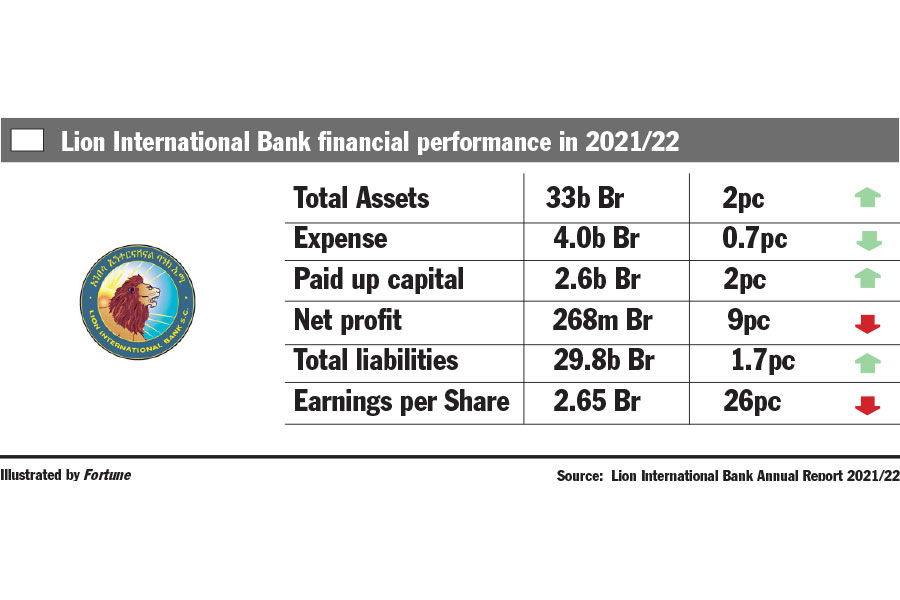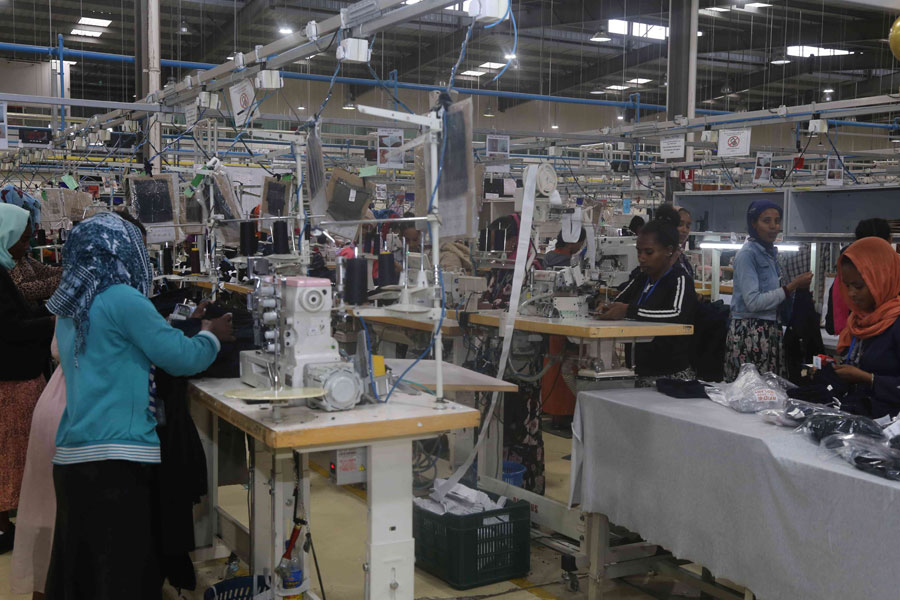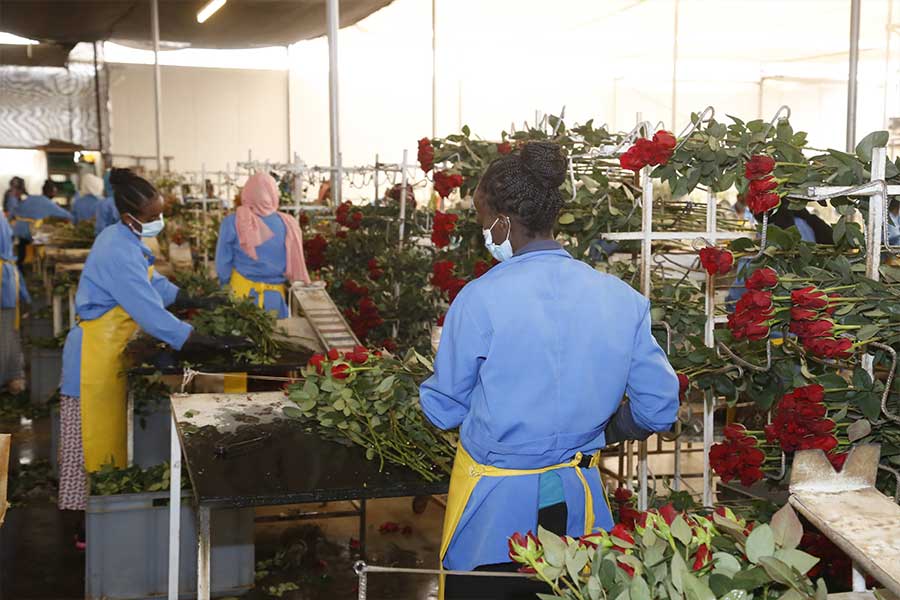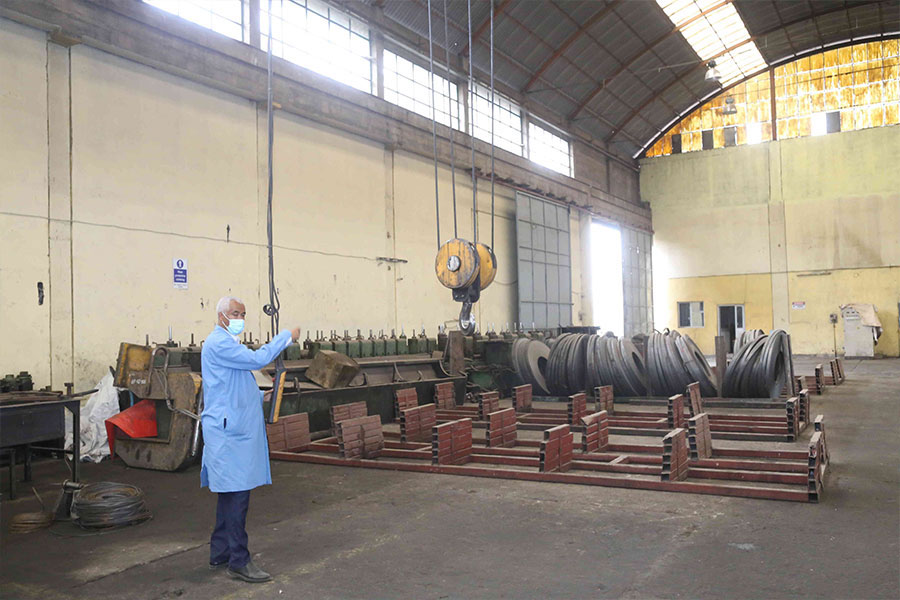
Commentaries | Jun 22,2024
May 28 , 2022
By BERSABEH GEBRE ( FORTUNE STAFF WRITER )
Textile plants see an unexpected surplus in cotton supply after months of shortages, as federal authorities stumble in efforts to procure thousands of tonnes through international bidding.
Glut in supply is in sharp contrast to an assessment carried out by experts at the Ethiopian Textile Industry Development Institute at the beginning of the year. They had forecasted a supply gap of 16,000tn haunting the textile industry, which requires over three times this volume each year. The civil war in the north (Afar Regional State), which accounts for 80pc of domestic production, was seen as a severe roadblock to supply. Security issues in other cotton-producing areas, such as the Benishangul-Gumuz and Gambella regional states, as well as flooding in Afar, have contributed to a 60pc decline in farmland covered by cotton over the past five years.
Experts at the Institute recommended the Ethiopian Industrial Inputs Development Enterprise float a tender for the procurement of 10,000tn cotton. In January this year, it did so with medium-quality cotton covering 60pc of the volume. Only one of over a dozen suppliers who had bought the bid documents showed up on January 25. The Enterprise was forced to consider other options; a month later, it invited 30 suppliers for a rebid to open at the end of last month.
Although two suppliers came, they failed to meet the technical requirement, disclosed Endeshaw Legesse, director of inputs procurement at the Enterprise.
Those at the Enterprise were little prepared to see cotton flooding the domestic market, pushing prices for a kilo of processed cotton down to half of the 130 Br over the past few months. A kilo of raw cotton fetches 52 Br.
Endeshaw attributed the surplus to businesspeople "hoarding" who begin to sell off their stocks. Nonetheless, the Enterprise procured three tonnes of cotton from domestic suppliers.
It was welcome news to the 122 large-scale textile factories. Eight of these are stand-alone spinning plants that produce open-end, ring and combed yarn; the 19 semi-integrated and eight integrated mills are also spinning. Combined, these factories have a production capacity of 102,000tn of cotton yarn. However, the factories have little need for the Enterprise's stock.
“They refused to buy, even on credit,” Endeshaw told Fortune.
The management of Adama Spinning Factory, with a daily need of 112qtl of cotton, has bought cotton to last it three months.
"We couldn't buy from the Enterprise even if we wanted to," said Yimer Yimam, CEO of Adama Spinning. "We've a shortage of working capital.”
Incorporated in 2008 with 160 million Br in registered capital, the factory has an annual production capacity of 3,650tn of yarn. However, it has been struggling to meet its potential due to a shortage of cotton supplies. It uses less than two-thirds of its capacity. Yimer disclosed the shortfalls forced it to cease production for three months beginning September 2021 while keeping 450 employees on the payroll.
"This hurt us," he said. "We're struggling to service our loans."
A lack of warehouse space for storing cotton is also an issue.
Bahir Dar Textile Factory is the country's largest plant, with the capacity to process 30,000tns of cotton a year. Its executives, too, say they have had their fill of the cash crop. They have stock sufficient for the next six months, according to Gebru Alemu, head of the procurement and supply department.
It had experienced similar turbulence to Adama Spinning. Shortages had forced Bahir Dar Textile to temporarily cease operations, though it kept paying salaries to 1,300 employees.
Yimer is cautious about the glut in supply.
“We've seen cotton suddenly disappearing from the market before," he said.
Abera Rechi (PhD), an associate professor and director of the Ethiopian Institute of Textile & Fashion Technology under Bahir Dar University, agreed. The expert observed that the supply chain is poorly organised, exposing it to hoarding.
“The cotton supply chain is unpredictable, affecting cotton producers and textile plants," he said.
Experts at the Institute say they will reassess their earlier conclusion.
PUBLISHED ON
May 28,2022 [ VOL
23 , NO
1152]

Commentaries | Jun 22,2024

Commentaries | Mar 05,2022

Fortune News | Mar 25,2023

Radar | Dec 04,2022

Radar |

Fortune News | Aug 05,2023

Agenda | Feb 13,2021

Fortune News | Aug 27,2022

Advertorials | Mar 13,2019

Fortune News | Nov 26,2022

Dec 22 , 2024 . By TIZITA SHEWAFERAW
Charged with transforming colossal state-owned enterprises into modern and competitiv...

Aug 18 , 2024 . By AKSAH ITALO
Although predictable Yonas Zerihun's job in the ride-hailing service is not immune to...

Jul 28 , 2024 . By TIZITA SHEWAFERAW
Unhabitual, perhaps too many, Samuel Gebreyohannes, 38, used to occasionally enjoy a couple of beers at breakfast. However, he recently swit...

Jul 13 , 2024 . By AKSAH ITALO
Investors who rely on tractors, trucks, and field vehicles for commuting, transporting commodities, and f...

Jun 28 , 2025
Meseret Damtie, the assertive auditor general, has never been shy about naming names...

Jun 21 , 2025
A well-worn adage says, “Budget is not destiny, but it is direction.” Examining t...

Jun 14 , 2025
Yet again, the Horn of Africa is bracing for trouble. A region already frayed by wars...

Jun 7 , 2025
Few promises shine brighter in Addis Abeba than the pledge of a roof for every family...